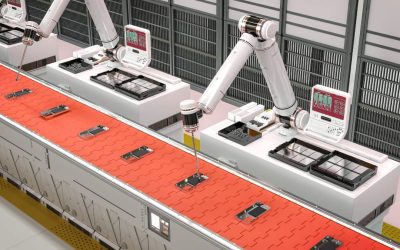Automation in manufacturing is now the key to driving efficiency and productivity. For streamlining processes, reducing errors, freeing up time and resources, and improving profit margins. However, how do you ensure success? What elements and factors should you consider and implement to ensure that all of the benefits automation offers are benefits that you reap?
The main ingredient for a successful automation project revolves around knowing your process.
The process steps and activities involved, the definition of material inputs and outputs, your budget, ROI performance indicators, what is critical to product quality, inspection, and much more.
Automation is no longer a nice to have but a must-have, and to ensure continued success, it must be managed and maintained.
Below, we go into the steps and activities that make an automation project successful and how you can implement these elements into your processes.
Process steps and activities
To guarantee the success of your automation project:
Know your process
What are you trying to achieve?
It’s essential that you define and have very clear objectives on what you want the automation project to achieve both in the short and long term.
For example, do you want to reduce costs? Improve accuracy? Increase productivity or even enhance the customer experience?
These areas must be explored with SMART goals identified, recorded, and aligned with business objectives to help keep things on track.
Know what to automate
What is the process you’re looking to automate? Is it partial automation or full?
What parts of your process are going to help you achieve the aims and objectives you’ve identified above if you implement automation?
Look to analyse workflows, identify and understand current pain points and inefficiencies, and where and how automation can support these areas and improve productivity and output.
Know your budget
Automation is a significant investment. An investment that will yield substantial long-term savings but one which will impact ROI in the short term.
From the outset, it’s essential that you have a realistic budget, you’re aware of any upfront costs, and you build into longer-term financial planning and ongoing maintenance.
Automation isn’t a one-time instalment.
Choose the right automation…and vendor
The right automation will align perfectly with your project’s objectives. Can it scale with you? Integrate with current systems? What support is on hand?
A robust, functional specification is key. Outlining all operations, functions, and equipment involved in the process and the interactions that will take place between people and systems.
Speak to automation specialists. Check out their experience, if they have the capacity to execute the project, speak with past clients, etc.
Engage with all stakeholders
Introducing automation into processes requires everyone’s buy-in, from key management for initial investment to those on the production line who will have responsibility for managing and operating new automated systems.
Identify with key personnel scope, boundaries, expectations, etc. Successful automation projects rely on keeping the project within budget and on schedule, and this is only achievable if everyone is on the same page.
This also links with investment in training, boosting workforce morale while improving business productivity.
Focus on data quality
Your data must be up-to-date and accurate to avoid errors and ensure complete effectiveness.
Consider what data must be collected, exchanged, and shared with other systems. What reporting and operational specifications will be required as input into automated processes?
Continuous monitoring
Successful automation requires ongoing monitoring where regular checks are made against set KPIs to track overall effectiveness and identify any issues, allowing you to make timely adjustments and continue to improve ROI.
Test, test, and test again
No process that goes through considerable changes, such as the implementation of automation, is without flaws and bugs. This is why testing is vital.
Critical at every stage, we advise testing to be carried out from development to deployment, removing any bugs and identifying any potential problems before full-scale production takes place.
Document everything
Keeping complete records and documentation of your automation project setup is crucial for knowledge transfer and troubleshooting.
Documenting the complete automation process, all configurations, any custom codes or scripts, etc., can prove vital in the event of system failure or even staff changes, keeping your project moving and moving successfully.
Powerful drivers for success
All automation projects can achieve success when they incorporate planning, collaboration, and ongoing commitment.
Maintaining automated processes, regular communication with key stakeholders, and working with specialist teams, like Innomech, who design and develop innovative purpose automation machines that can scale with your business, all aid in improving productivity, profitability, and compliance.
To find out more, contact us today and see how we can help turn your automation project into a successful one.




